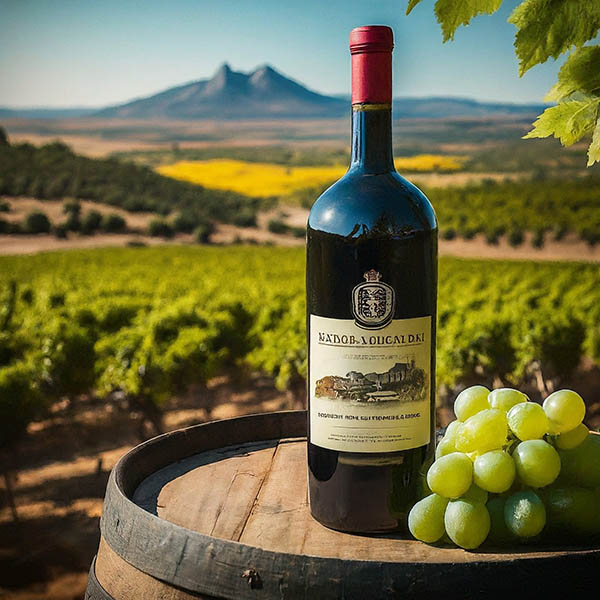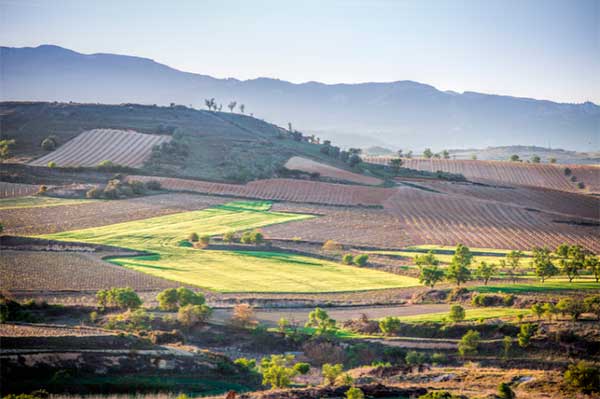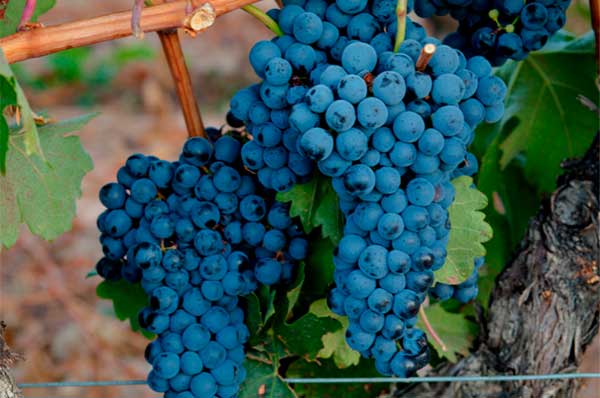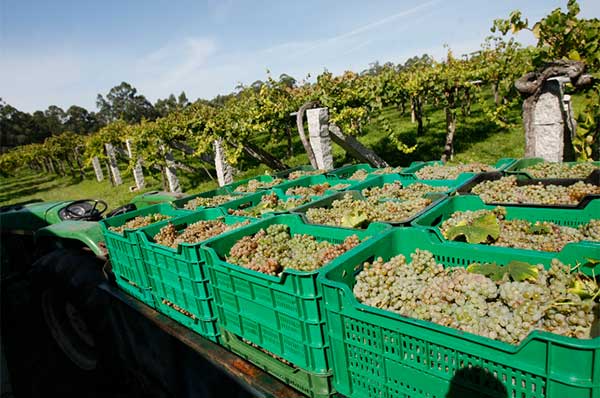Introduction
Spanish wine, with its rich history and diverse palette, holds a prestigious position in the world of viticulture. Known for its wide range of flavors, aromas, and styles, it caters to every wine lover’s taste. This practical guide aims to demystify the complexities surrounding Spanish wine, making it accessible to both novices and connoisseurs alike. We will delve into the heart of Spain’s viniculture, exploring its most famous wines, understanding the classifications that dictate their quality and authenticity, journeying through the key wine-producing regions, and discovering the native and international grapes that give Spanish wines their unique identity. Whether you’re looking to deepen your appreciation or simply explore the vibrant world of Spanish wine, this guide will be your compass.
The Famous Spanish Wines
Rioja – The Jewel in Spain’s Viticultural Crown

Rioja stands as the most celebrated and widely recognized wine from Spain, especially in the United States. It’s not just a wine; it’s a symbol of Spanish heritage and winemaking tradition. Originating from the autonomous community of La Rioja (among other areas), this wine is celebrated for its complex aging process and the stringent regulations that govern its production.
Riojas are primarily made from the Tempranillo grape, offering a splendid range of flavors from fresh and fruity to deep and earthy, depending on the aging process. They are classified into four categories based on aging criteria: Rioja (the youngest), Crianza, Reserva, and Gran Reserva, with the latter being aged the longest, offering a more refined and complex flavor profile.
Priorat – A Testament to Spanish Terroir
Emerging from the rugged terrain of Catalonia, Priorat wines command respect and admiration for their intensity and depth. The region’s unique llicorella soil, a mix of slate and quartz, is credited with imparting a distinctive minerality to its wines. Priorat’s wines are predominantly red, crafted mainly from Garnacha (Grenache) and Cariñena (Carignan) grapes.
These wines are known for their rich, full-bodied character, with a potent concentration of fruit flavors, complemented by a mineral edge. Priorat’s status as one of the two Spanish regions classified as DOCa (Denominación de Origen Calificada) underscores its exceptional quality and the rigorous standards it maintains.
Albariño – The Fragrant White of Spain
Venturing into the realm of Spanish whites, Albariño deserves a special mention. Hailing from the Rías Baixas region in Galicia, this wine is celebrated for its aromatic profile, marked by floral notes and crisp acidity. Albariño grapes thrive in the cool, rainy climate of northwestern Spain, producing wines that are light yet complex, with flavors ranging from zesty citrus to ripe peach. These wines are a testament to Spain’s ability to produce world-class white wines that can stand alongside its renowned reds.
Ribera del Duero – The Bold Contender
Ribera del Duero, a name synonymous with full-bodied and robust red wines, has risen in popularity, challenging Rioja for the title of Spain’s most esteemed wine region. Situated on the high plains of Castile and León, the extreme climate conditions—hot days and cool nights—contribute to the intensity and depth of flavor in the wines. Tempranillo, locally known as Tinto Fino, is the dominant grape variety, yielding wines that are powerful yet refined, with potential for aging. Ribera del Duero’s wines are characterized by their dark fruit flavors, firm tannins, and an elegance that has captured the palates of wine enthusiasts around the globe.
Jerez (Sherry) – The Unique Fortified Wine
No exploration of Spanish wines would be complete without mentioning Jerez, or Sherry, a wine category that stands apart due to its unique production process involving solera aging. Produced in the southern region of Andalusia, Sherry comes in various styles, from dry and crisp Fino and Manzanilla to the sweet and luscious Pedro Ximénez. This diversity offers something for every taste, showcasing the versatility and innovation of Spanish winemaking. Sherry’s complex flavors and aromas, ranging from nutty and saline to rich and sweet, make it a fascinating subject for wine lovers seeking to broaden their horizons.
This concludes our tour of the most famous Spanish wines, a journey that has taken us from the tempranillo-dominated reds of Rioja and Ribera del Duero to the fragrant Albariño whites of Galicia, and the unique fortified wines of Jerez. Each wine, with its distinct character and heritage, contributes to the rich mosaic of Spanish viticulture. As we proceed, we’ll delve into the intricacies of Spanish wine classifications, a key aspect in understanding what sets these wines apart on the global stage.
Spanish Wine Classifications
Understanding the classification system of Spanish wine is crucial for appreciating the diversity and quality of wines produced in the country. This system not only informs consumers about the wine’s origin but also about its aging process, which is integral to the wine’s character and flavor profile. Let’s explore the main classifications that are fundamental to Spanish wine law.
Denominación de Origen (DO)

The Denominación de Origen (DO) is a classification that signifies the wine comes from a specific geographical area with characteristics that influence the wine’s qualities. Each DO has its regulatory council that sets and enforces strict guidelines related to grape varieties, winemaking practices, and aging requirements. This classification ensures that wines meet high-quality standards and maintain the unique characteristics of their region. Spain boasts over 70 DOs, covering the vast diversity of its wine regions, from the cool, green hills of Galicia to the arid landscapes of Castilla-La Mancha.
Denominación de Origen Calificada (DOCa) or Denominación de Origen Protegida (DOP)
A step above the DO is the Denominación de Origen Calificada (DOCa) in Spanish or Denominación de Origen Protegida (DOP), which is recognized throughout the European Union. This status is awarded to regions that have consistently produced high-quality wines for a minimum of ten years. It’s a testament to the region’s dedication to maintaining the highest standards in viticulture and winemaking. Currently, only Rioja and Priorat hold the DOCa status, highlighting their exceptional quality and reputation on the global stage.
Vino de Pago (VP)
Vino de Pago (VP) is the pinnacle of Spanish wine classifications, reserved for wines from specific vineyards or estates that have a unique microclimate and soil. These wines must surpass rigorous quality tests and are subject to strict regulations that often exceed those of the DO and DOCa classifications. Vino de Pago represents the epitome of excellence in Spanish winemaking, showcasing the unique characteristics of a single estate or vineyard.
Vinos de la Tierra (VdlT)
Vinos de la Tierra (VdlT) is akin to the French “Vin de Pays,” indicating wines that come from a broader region than those classified under DO. While these wines might not meet the strict criteria of the DO classifications, they often offer exciting expressions of local grape varieties and winemaking styles. This classification allows winemakers more flexibility in production and the opportunity to experiment and innovate, often leading to unique and expressive wines.
The Aging Classifications
Spanish wines are also classified based on their aging process, particularly for red wines. These classifications include:
- Joven: Wines that have seen little to no oak aging and are meant to be consumed young.
- Crianza: Red wines aged for at least two years, with at least six months in oak. For whites and rosés, the aging period is at least 18 months, with at least six months in oak.
- Reserva: Red wines aged for at least three years, with at least one year in oak. Whites and rosés must be aged for at least two years, with at least six months in oak.
- Gran Reserva: Red wines from exceptional vintages, aged for at least five years, with at least two years in oak. Whites and rosés are aged for at least four years, with at least six months in oak.
This intricate classification system not only highlights the quality and diversity of Spanish wines but also serves as a guide for consumers to understand the style and character of the wine they are enjoying. As we journey through the wine-producing regions and delve into the grape varieties that define Spanish wines, these classifications will be a beacon, illuminating the rich tapestry of Spain’s vinicultural heritage.
Spanish Wine Producing Regions
Spain’s diverse geography, from its coastal areas to high plateaus, creates a rich tapestry of wine-producing regions, each with its unique climate, soil, and winemaking traditions. This diversity allows Spain to produce a wide array of wines, ranging from crisp whites to robust reds and everything in between. Let’s explore some of the most significant wine-producing regions in Spain, understanding their contributions to the country’s vinicultural identity.
Rioja – The Heart of Spanish Wine

Rioja, perhaps the most renowned wine region in Spain, is synonymous with high-quality wines, especially reds made primarily from Tempranillo grapes. This region is divided into three sub-regions: Rioja Alta, Rioja Alavesa, and Rioja Oriental (formerly known as Rioja Baja), each offering its unique expression of the grape. Rioja’s wines are celebrated for their balance, aging potential, and the oak-infused flavors that come from traditional aging practices.
Ribera del Duero – The Land of Robust Reds
Situated on the high plains of Castile and León, Ribera del Duero is renowned for its powerful and full-bodied red wines, also primarily made from Tempranillo (locally known as Tinto Fino). The extreme climatic conditions, with hot days and cool nights, contribute to the concentration of flavors and the aging potential of these wines. Ribera del Duero produces some of Spain’s most prestigious wines, characterized by their depth, complexity, and intensity.
Priorat – A Blend of Tradition and Innovation
Located in Catalonia, Priorat is one of the two regions awarded the DOCa status, reflecting its exceptional wine quality. The region is known for its unique llicorella soil, a mixture of slate and quartz that imparts a distinct mineral quality to its wines. Priorat wines, mainly made from Garnacha and Cariñena, are highly concentrated, with a balance of ripe fruit flavors and a mineral edge. The region’s commitment to quality and innovation has positioned it at the forefront of Spanish winemaking.
Rías Baixas – The White Wine Jewel
In the northwest corner of Spain, in Galicia, lies Rías Baixas, a region celebrated for its white wines, especially those made from the Albariño grape. The cool, damp climate is ideal for producing fresh, aromatic whites with vibrant acidity. Albariño wines are known for their floral and fruity notes, making them perfect companions to seafood, a staple of Galician cuisine.
Jerez-Xérès-Sherry – The Fortified Fame
The Jerez-Xérès-Sherry region in Andalusia is famous for its fortified wines, known globally as Sherry. With a history dating back thousands of years, Sherry production involves a complex aging process called the solera system, which gives these wines their unique character. Sherry comes in a variety of styles, from the dry and light Fino to the rich and sweet Pedro Ximénez, showcasing the region’s versatility and winemaking expertise.
Other Notable Regions
Spain is home to numerous other wine-producing regions, each adding to the country’s vinicultural richness. These include:
- Valdepeñas: Known for value-driven, high-quality wines, primarily reds made from Tempranillo.
- La Mancha: The largest wine-producing area in Spain, offering a wide range of wine styles.
- Penedès: A versatile wine region in Catalonia, known for its Cava (Spanish sparkling wine), as well as still whites and reds.
- Navarra: Neighboring Rioja, it produces an array of wine styles, increasingly focusing on quality and varietal expression.
The wine-producing regions of Spain offer a kaleidoscope of flavors, styles, and traditions. From the lush, green landscapes of Galicia to the sun-drenched hills of Andalusia, each region contributes its unique character to the mosaic of Spanish wine. As we turn our attention to the grapes that form the essence of these wines, we’ll delve deeper into the heart of Spain’s vinicultural heritage.
The Grapes Used in Spanish Wines
The diversity of Spain’s wine is not just a product of its varied landscapes and climates but also of the wide array of grape varieties cultivated across the country. These grapes, both native and international, are the building blocks of Spanish wine, each contributing its unique flavors, aromas, and characteristics to the final product. Let’s explore some of the key grape varieties that have come to define the essence of Spanish wine.
Tempranillo – The Backbone of Spanish Reds

Tempranillo is arguably Spain’s most renowned grape, serving as the backbone for many of its most famous red wines, including those from Rioja and Ribera del Duero. This versatile grape is known for its ability to reflect the terroir of its vineyard, resulting in a wide range of wine styles. Tempranillo wines can range from fruity and light when young to complex and full-bodied, with flavors of berries, plum, tobacco, leather, and vanilla, after aging in oak.
Garnacha (Grenache) – From Rich Reds to Rosés
Garnacha, known internationally as Grenache, is another pivotal grape in Spanish winemaking. It thrives in hot, dry climates, making it a staple in regions like Priorat and Aragón. Garnacha produces rich, full-bodied red wines that boast high alcohol content and flavors of red fruit, spice, and hints of earthiness. It’s also a popular choice for rosé wines, offering a more fruit-forward profile with soft, approachable tannins.
Albariño – The Fragrant White of Galicia

Albariño is the star white grape of the Rías Baixas region, known for producing aromatic, high-acid wines that are perfect for seafood pairings. This grape variety is celebrated for its peach, apricot, and citrus flavors, combined with floral notes and a saline minerality that reflects its coastal origins. Albariño wines are typically best enjoyed young, when their freshness and vibrant fruit flavors are most pronounced.
Verdejo – A Versatile White Grape
Verdejo is the signature grape of the Rueda region and is known for its versatility and aromatic profile. Wines made from Verdejo can range from light and fresh to more full-bodied and complex, often aged on lees or in oak. They typically exhibit flavors of citrus, green apple, pear, and herbs, with a characteristic bitter almond finish. Verdejo wines are increasingly gaining international recognition for their quality and unique character.
Other Notable Varieties
- Monastrell (Mourvèdre): A key red grape in regions like Jumilla, producing robust, tannic wines with flavors of dark fruit and spice.
- Cariñena (Carignan): Often used in blends, especially in Priorat, adding depth and structure with its high tannins and acidity.
- Palomino: The principal grape used in the production of Sherry, yielding a range of styles from dry to sweet, fortified wines.
- Macabeo (Viura): A versatile white grape used in still wines as well as Cava, Spain’s sparkling wine, known for its floral and fruity characteristics.
The grapes of Spain are as diverse as the country’s culinary traditions, landscapes, and cultures. From the robust reds of Tempranillo and Garnacha to the crisp, aromatic whites of Albariño and Verdejo, these varieties capture the spirit and essence of Spanish winemaking. Whether exploring the bold flavors of a Priorat red or the refreshing zest of a Rías Baixas Albariño, the grapes used in Spanish wines offer a rich palette of tastes and experiences for wine lovers to discover and enjoy.
